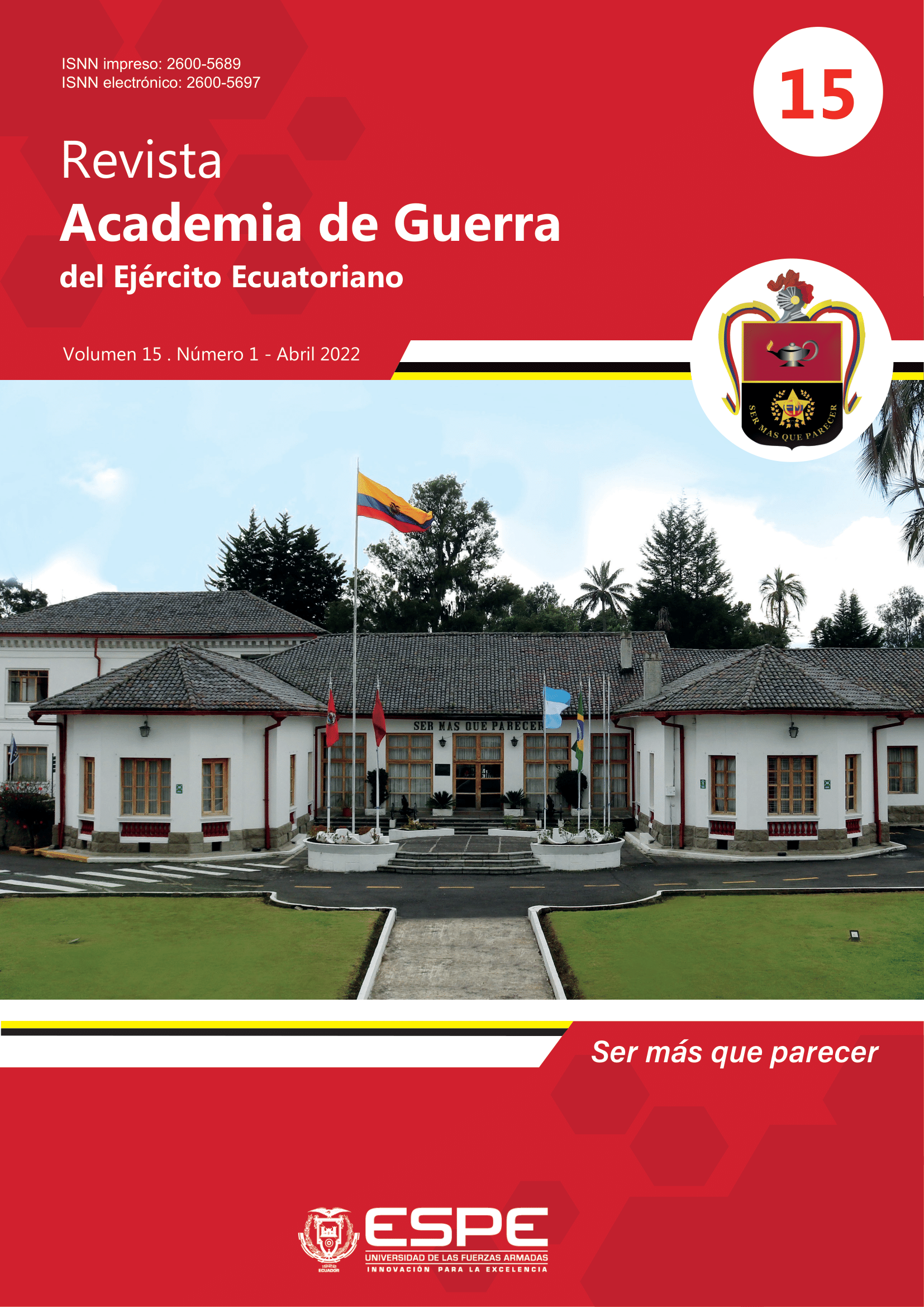CAPACIDAD DEL ESTADO PARA COMBATIR Y/O NEUTRALIZAR LAS NUEVAS AMENAZAS HIBRIDAS
Main Article Content
Abstract
In the international analysis of security and protection, states face new threats, conflicts and wars called “hybrid”, taking into consideration that this “hybrid” terminology corresponds to a group of violent demonstrations that violate state entities causing crisis and commotion.
Since the State is the political organization formed and constituted by a number of government institutions in charge of providing the population with stability in all aspects that arise, be they social, political, economic and others, it is the one who must guarantee the normal development and development of security policies and endorse the mechanisms that make it possible to achieve the equitable parameters of stability for its population, for which it must take the necessary measures under legal protection, which guarantee the normal development and development of these state policies, in the face of the new prevailing threats that grow and become entrenched in it, such as: drug trafficking and drug cartels, criminal gangs, terrorism, hit men, disinformation, cyber-attacks among others, without forgetting corruption, unbridled migration to our country and either to settle or as a country of passage, etc. and that lead to uncertainty and citizen helplessness.
Let us take into account that security is, to a great extent, a result of the capacity of power; (Moncayo Gallegos, 1994), and it is the State that has the power and authority to make the necessary changes and specifically develop the prevention, control and eradication actions of the growing threats and conflicts that violate collective security.
Downloads
Article Details

This work is licensed under a Creative Commons Attribution-NonCommercial-ShareAlike 4.0 International License.
Politicas de acceso y reuso
El autor conserva el derecho a ser propietario intelectual del artículo y podría solicitar al Director de la Revista el uso posterior de este trabajo.
El lector tiene derecho a enviar los comentarios que crea conveniente sobre los artículos de la revista, y a participar en los foros que se organicen en torno de los artículos de la revista.
How to Cite
Share
References
ACNUR. (02 de agosto de 2021). acnur.org. Obtenido de https://www.acnur.org/noticias/press/2021/8/610816354/el-82-de-las-personas-en-movilidad-humana-en-ecuador-estaria-en-riesgo.html?gclid=Cj0KCQiAt8WOBhDbARIsA
Argoti Zambrano, M. (2019). El empleo del ejército de los ecuatorianos en el terremoto del 16 de abril del 2016. Quito: Editogran-Medios Públicos EP.
Bartolomé, M. (29 de 11 de 2019). FlacsoAndes. Obtenido de https://revistas.flacsoandes.edu.ec/urvio/article/view/4249
Cárdenas Torres, E. (22 de agosto de 2021). Crisis en el sistema penitenciario: de la raíz del problema al surgir de una respuesta. Obtenido de https://inredh.org/crisis-en-el-sistema-penitenciario/
Carrasco, M. (5 de noviembre de 2021). ¿En qué consiste el Plan Ecuador del que habla Guillermo Lasso para enfrentar al narcotráfico? EL UNIVERSO.
Conde Paredes, F. (Abril de 2020). Grupos irregulares armados en el conflicto de la frontera colombo-ecuatoriana y su relación con el narcotráfico. Obtenido de Army University Press: https://www.armyupress.army.mil/Portals/7/military-review/Archives/Spanish/Conde-grupos-irregulares-armados-en-el-conflicto-de-la-frontera-colombo-ecuatoriana-y-su-relacion-con-el-narcotrafico-SPA-Q2-2020.pdf
Constituyente, A. (2008). Constitución de la República del Ecuador. Quito: s/d.
Crime, I. (05 de febrero de 2020). En las sombras: Cocaína, crimen y corrupción en Ecuador. Obtenido de https://es.insightcrime.org/investigaciones/cocaina-crimen-corrupcion-ecuador/
Delito, U. O. (julio de 2021). Monitoreo de territorios afectados por cultivos ilícitos 2020. Obtenido de https://www.unodc.org/documents/crop-monitoring/Colombia/Colombia_Monitoreo_de_territorios_afectados_por_cultivos_ilicitos_2020.pdf
HERIBERTO CAIRO, J. P. (2006). GEOPOLÍTICA, GUERRAS Y RESISTENCIAS. En H. C. PASTOR. Madrid España: Trama, Editorial.
Jimenez, F. C. (2020). Nuevas Amenazas para el Ecuador en la Frontera Norte. Academia de Guerra del Ejército Ecuatoriano, 104.
LISA INSTITUTE. (20 de 05 de 2019). LISA INSTITUTE. Obtenido de https://www.lisainstitute.com/blogs/blog/guerra-hibrida-amenazas-hibridas
Moncayo Gallegos, P. (1994). Geopolítica, Poder y Seguridad. En P. Moncayo Gallegos, Geopolítica, Poder y Seguridad (pág. 45). Quito: escuela Politecnica del Ejército.
Mundo, N. P. (30 de septiembre de 2021). Obtenido de https://www.bbc.com/mundo/noticias-america-latina-58748756
Nacional, A. (2014). Plan Nacional de Seguridad Integral. Quito: s/d.
Nuñez Vega, J. (s/d de s/d de s/d). La crisis del sistema penitenciario en Ecuador. Obtenido de https://biblio.flacsoandes.edu.ec/catalog/resGet.php?resId=11501
Piedra Celi , J. L. (10 de 12 de 2021). Abogado. (A. Velasco, Entrevistador)
Sanabria Salinas, D. C. (S/d de s/d de 2019). Respuestas del Estado ecuatoriano, frente a la amenaza global de. Obtenido de https://repositorio.uasb.edu.ec/bitstream/10644/7047/1/T3055-MRI-Sanabria-Respuestas.pdf
Sanabria Salinas, D. C. (s/d de s/d de 2019). Respuestas del Estado ecuatoriano, frente a la amenaza global de. Obtenido de https://repositorio.uasb.edu.ec/bitstream/10644/7047/1/T3055-MRI-Sanabria-Respuestas.pdf
Zárate Zapata, G. H. (2021). Las nuevas amenazas a la seguridad en el contexto latinoamericano. Academia de Guerra del Ejército Ecuatoriano, 35-42.





